Themed collection 2022 Journal of Materials Chemistry A Most Popular Articles

Perovskite nanocrystals stabilized in metal–organic frameworks for light emission devices
Perovskite nanocrystals embedded in metal–organic frameworks (PeMOF) are a new nanoscale heterostructure for stable photonic sources. This perspective discusses the properties of PeMOF structures and their current progress in photonic devices.
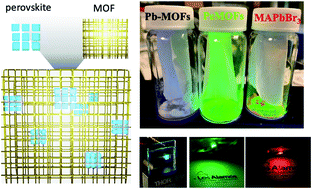
J. Mater. Chem. A, 2022,10, 19518-19533
https://doi.org/10.1039/D2TA02154D
CO2 electrochemical reduction on metal–organic framework catalysts: current status and future directions
The versatility of MOFs is ideal for designing efficient CO2RR electrocatalysts, yet their poor stability and conductivity needs to be improved.

J. Mater. Chem. A, 2022,10, 5899-5917
https://doi.org/10.1039/D1TA10440C
Low-temperature resistant gel polymer electrolytes for zinc–air batteries
The rapid development of wearable devices has put forward high requirements for stable, solid-state, flexible and even stretchable energy storage systems.
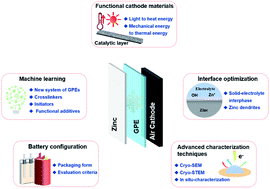
J. Mater. Chem. A, 2022,10, 19304-19319
https://doi.org/10.1039/D2TA02381D
Recent strategies for activating the basal planes of transition metal dichalcogenides towards hydrogen production
The currently strategies for activating the TMDC basal planes toward hydrogen evolution reaction were summarized, which are divided into internal and external regulation, depending on whether the pristine structure is altered or not.
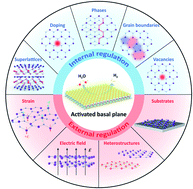
J. Mater. Chem. A, 2022,10, 19067-19089
https://doi.org/10.1039/D2TA02458F
Organic electrolyte design for practical potassium-ion batteries
In this review, recent electrolyte design strategies and progress are given, along with the discussion of relative key features and properties, as well as the practical design and considerations.

J. Mater. Chem. A, 2022,10, 19090-19106
https://doi.org/10.1039/D2TA02223K
Advances in pseudocapacitive and battery-like electrode materials for high performance supercapacitors
Systematic survey on the fabrication and electrochemical performance of the most promising classes of pseudocapacitive/battery-type electrode materials for supercapacitors.
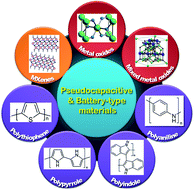
J. Mater. Chem. A, 2022,10, 13190-13240
https://doi.org/10.1039/D2TA02357A
Hydrogels for underwater adhesion: adhesion mechanism, design strategies and applications
This review summarizes the adhesion mechanism and design strategies of underwater adhesion hydrogels, and generalizes their underwater application fields (adhesives, motion monitoring, marine environmental exploration and coatings).
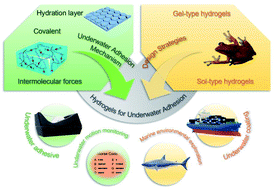
J. Mater. Chem. A, 2022,10, 11823-11853
https://doi.org/10.1039/D2TA01960D
Nanoscale metal oxides–2D materials heterostructures for photoelectrochemical water splitting—a review
This review comprehensively discusses the state-of-the-art of metal oxides/2D materials heterostructures as promising alternatives to harvest the renewable source of sunlight for improved photoelectrochemical water splitting performance.
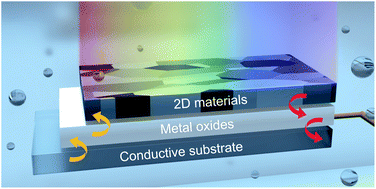
J. Mater. Chem. A, 2022,10, 8656-8686
https://doi.org/10.1039/D1TA10203F
Recent progress in organic solar cells based on non-fullerene acceptors: materials to devices
This review presents the recent progress in organic solar cells based on non-fullerene acceptors, with a wide coverage from material synthesis and processing to interface engineering, device structure, large-area fabrication, and device stability.
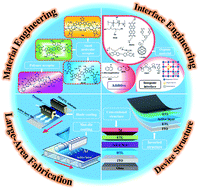
J. Mater. Chem. A, 2022,10, 3255-3295
https://doi.org/10.1039/D1TA10707K
Heterostructured hybrids of metal–organic frameworks (MOFs) and covalent–organic frameworks (COFs)
MOF/COF-based hybrids show the properties of precisely tunable compositions and structures, and provide a broad range of potential applications in gas sorption and separation, catalysis, energy transfer, biomedicine, etc.

J. Mater. Chem. A, 2022,10, 475-507
https://doi.org/10.1039/D1TA06006F
Upcycling waste poly(ethylene terephthalate) into polymer electrolytes
The first working lithium-ion battery containing polymer electrolytes derived from waste poly(ethylene terephthalate) beverage bottles is demonstrated.
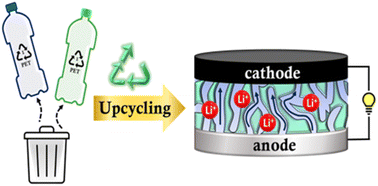
J. Mater. Chem. A, 2022,10, 24468-24474
https://doi.org/10.1039/D2TA06692K
Green synthesis of zirconium MOF-808 for simultaneous phosphate recovery and organophosphorus pesticide detoxification in wastewater
A green route to prepare Zr-based MOF-808 with controlled crystal size have been developed. MOF-808 is able to decontaminate wastewater by simultaneously degrading a toxic pesticide and recovering phosphate ions.

J. Mater. Chem. A, 2022,10, 19606-19611
https://doi.org/10.1039/D2TA02074B
Amorphization engineered VSe2−x nanosheets with abundant Se-vacancies for enhanced N2 electroreduction
Amorphous VSe2−x nanosheets with abundant Se-vacancies (VSe) showed dramatically enhanced NRR activity and selectivity, attributed to the amorphization-triggered Se-vacancies that promote the NRR and impeding the H2 evolution.

J. Mater. Chem. A, 2022,10, 1742-1749
https://doi.org/10.1039/D1TA06746J
Triggering interfacial activity of the traditional La0.5Sr0.5MnO3 cathode with Co-doping for proton-conducting solid oxide fuel cells
Doping the Co element into the traditional La0.5Sr0.5MnO3−δ cathode material triggers the activity of the cathode/electrolyte interface in the composite cathode, leading to impressively high cell performance for proton-conducting solid oxide fuel cells.
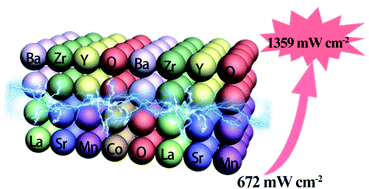
J. Mater. Chem. A, 2022,10, 1726-1734
https://doi.org/10.1039/D1TA09450E
Biobased catalyst-free covalent adaptable networks based on CF3-activated synergistic aza-Michael exchange and transesterification
This study reports the synthesis and characterization of biobased CANs incorporating CF3-activated aza-Michael bonds and ester groups showing remarkable reprocessing abilities and high activation energy.
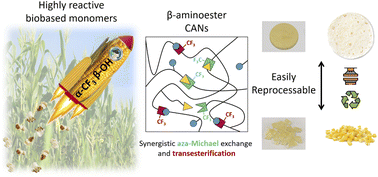
J. Mater. Chem. A, 2022,10, 25085-25097
https://doi.org/10.1039/D2TA05067F
Ultrahigh fluid sorption capacity of superhydrophobic and tough cryogels of cross-linked cellulose nanofibers, cellulose nanocrystals, and Ti3C2Tx MXene nanosheets
Here, we present superhydrophobic, hierarchical, and nanostructured cryogels made from cellulose nanofibers (CNFs) and nanocrystals (CNCs), double cross-linked with MXene nanosheets and poly(vinyl alcohol) (PVA) in the presence of tetradecylamine.

J. Mater. Chem. A, 2022,10, 24746-24760
https://doi.org/10.1039/D2TA06437E
Simple upcycling of virgin and waste polyethylene into covalent adaptable networks: catalyst-free, radical-based reactive processing with dialkylamino disulfide bonds
For the first time, virgin and waste polyethylene (PE) was upcycled using exclusively free-radical methods into reprocessable, thermally stable, and creep-resistant PE covalent adaptable networks capable of dialkylamino disulfide dynamic chemistry.

J. Mater. Chem. A, 2022,10, 24726-24745
https://doi.org/10.1039/D2TA06364F
High-performance and low-cost organic solar cells based on pentacyclic A–DA′D–A acceptors with efficiency over 16%
Developing high-performance and low-cost donor/acceptor materials is crucial for the industrialization of organic solar cells (OSCs).
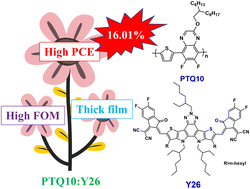
J. Mater. Chem. A, 2022,10, 24717-24725
https://doi.org/10.1039/D2TA07239D
A 2D copper-imidazolate framework without thermal treatment as an efficient ORR electrocatalyst for Zn–air batteries
A novel water-stable 2D Copper-Imidazolate Framework (2DCIF) exhibits outstanding electrocatalytic activity for the oxygen reduction reaction without the need for calcination. These 2DCIFs have been successfully used as air electrodes in Zn–air batteries.
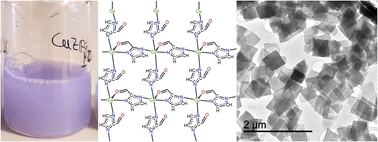
J. Mater. Chem. A, 2022,10, 24590-24597
https://doi.org/10.1039/D2TA05988F
Vanadium defect-engineering in molybdenum disulfide for electrochemical nitrate reduction
In this work, vanadium doped molybdenum disulfide (V–MoS2) electrocatalysts are successfully prepared by using vanadium defect-engineering for electrochemical nitrate reduction reaction (NITRR), which has significantly improved NITRR activity.
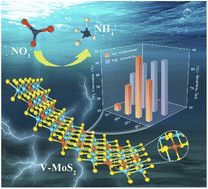
J. Mater. Chem. A, 2022,10, 23990-23997
https://doi.org/10.1039/D2TA06346H
Materials design principles of amorphous cathode coatings for lithium-ion battery applications
We propose the general selection guidelines of amorphous cathode coatings for lithium-ion batteries based on an extensive high-throughput computational study and detailed ionic diffusion analysis.

J. Mater. Chem. A, 2022,10, 22245-22256
https://doi.org/10.1039/D2TA06051E
Surface reduction in lithium- and manganese-rich layered cathodes for lithium ion batteries drives voltage decay
Surface reduction leads to voltage decay in extended cycling of Li- and Mn-rich layered oxides (Li1.2Ni0.2Mn0.6O2).
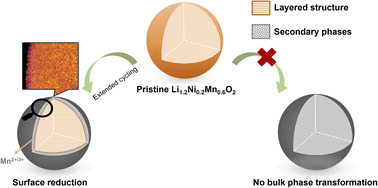
J. Mater. Chem. A, 2022,10, 21941-21954
https://doi.org/10.1039/D2TA04876K
Cu-functionalised porous boron nitride derived from a metal–organic framework
We develop a route to synthesise Cu-functionalized porous BN (Cu/BN) directly from a metal–organic framework (MOF). The Cu/BN presents an improved CO2 photoreduction performance compared to pristine BN and standard reference sample, g-C3N4.

J. Mater. Chem. A, 2022,10, 20580-20592
https://doi.org/10.1039/D2TA05515E
Marine waste upcycling—recovery of nylon monomers from fishing net waste using seashell waste-derived catalysts in a CO2-mediated thermocatalytic process
A strategy for marine waste upcycling and CO2 utilization by the recovery of high-value monomer from fishing net waste using seashell waste-derived catalysts in the presence of CO2.
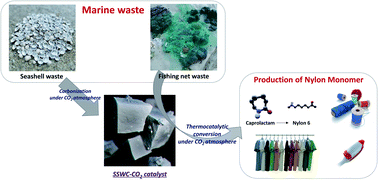
J. Mater. Chem. A, 2022,10, 20024-20034
https://doi.org/10.1039/D2TA02060B
The resistive nature of decomposing interfaces of solid electrolytes with alkali metal electrodes
A crucial ingredient in lithium (Li) and sodium (Na)-ion batteries (LIBs and NIBs) is the electrolyte.
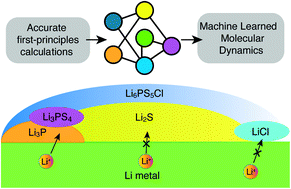
J. Mater. Chem. A, 2022,10, 19732-19742
https://doi.org/10.1039/D2TA02202H
A simple decagram-scale synthesis of an atomically dispersed, hierarchically porous Fe–N–C catalyst for acidic ORR
A scalable synthesis of magnesium ion imprinted nitrogen-doped carbon allows for facile preparation of large quantities of Fe–N–C, for large-scale fuel cell research.
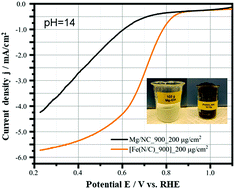
J. Mater. Chem. A, 2022,10, 19859-19867
https://doi.org/10.1039/D2TA00925K
Impact of processing conditions on the film formation of lead-free halide double perovskite Cs2AgBiBr6
Text-mining inspired study on halide double perovskite formation using in situ structural and optical probes.
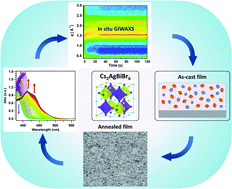
J. Mater. Chem. A, 2022,10, 19868-19880
https://doi.org/10.1039/D2TA00763K
Deconstructing proton transport through atomically thin monolayer CVD graphene membranes
We deconstruct the origins of the orders of magnitude difference in proton conductance between micron and centimeter-scale monolayer graphene membranes to help advance atomically thin proton exchange membranes for applications in energy conversion, storage and separation.
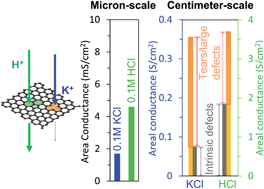
J. Mater. Chem. A, 2022,10, 19797-19810
https://doi.org/10.1039/D2TA01737G
Solvent effect on the Seebeck coefficient of Fe2+/Fe3+ hydrogel thermogalvanic cells
The Seebeck coefficient of Fe2+/3+ thermogalvanic cells is inversely proportional to the donor number of organic solvent additives, which cause rearrangement of the Fe2+/3+ solvent shell.
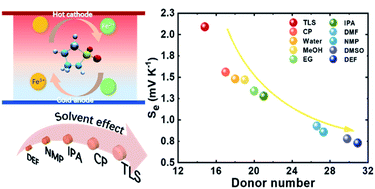
J. Mater. Chem. A, 2022,10, 19690-19698
https://doi.org/10.1039/D1TA10508F
Mixed ionic and electronic conducting binders containing PEDOT:PSS and organic ionic plastic crystals toward carbon-free solid-state battery cathodes
PEDOT:PSS was combined with OIPCs (C2mpyrFSI and C2mpyrTFSI) which gave high ionic and electronic conductivities and when employed for the first time in a solid-state Li|LiFePO4 cell as an OMIEC binder it showed an outstanding performance.
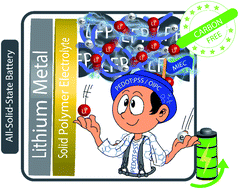
J. Mater. Chem. A, 2022,10, 19777-19786
https://doi.org/10.1039/D1TA09628A
A single-crystal nickel-rich material as a highly stable cathode for lithium-ion batteries
Compared to polycrystalline Ni-rich cathode materials, single crystal Ni-rich LiNi0.8Co0.1Mn0.1O2 materials have less irreversible structural and phase changes under varied temperature conditions, improving their cycling stability.
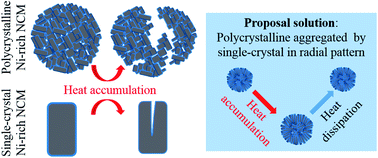
J. Mater. Chem. A, 2022,10, 19680-19689
https://doi.org/10.1039/D2TA01186G
Photoelectrochemical alcohols oxidation over polymeric carbon nitride photoanodes with simultaneous H2 production
We report a photoelectrochemical (PEC) approach for the selective oxidation of alcohols to value-added products with simultaneous hydrogen (H2) generation using polymeric carbon nitride (CN) film as a photoanode.
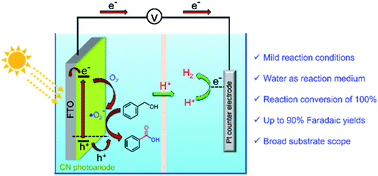
J. Mater. Chem. A, 2022,10, 16585-16594
https://doi.org/10.1039/D2TA03660F
Anion exchange membrane water electrolysis using Aemion™ membranes and nickel electrodes
Anion exchange membrane water electrolysis (AEMWE) is a potentially low-cost and sustainable technology for hydrogen production that combines the advantages of proton exchange membrane and traditional alkaline water electrolysis systems.
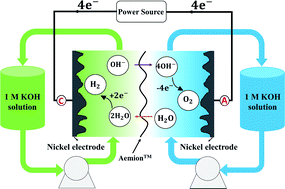
J. Mater. Chem. A, 2022,10, 16061-16070
https://doi.org/10.1039/D2TA03291K
Achieving 15.81% and 15.29% efficiency of all-polymer solar cells based on layer-by-layer and bulk heterojunction structures
PCEs of 15.81% and 15.29% are achieved in LbL and BHJ all-PSCs with polymer donor PM6, polymer acceptor PY-IT and CN as an additive. Over 15% PCE improvement can be obtained in LbL and BHJ all-PSCs with CN in LbL and BHJ active layers.

J. Mater. Chem. A, 2022,10, 13492-13499
https://doi.org/10.1039/D2TA02914F
Controllable synthesis of N/Co-doped carbon from metal–organic frameworks for integrated solar vapor generation and advanced oxidation processes
We propose the controllable synthesis of N/Co-doped carbon from metal–organic frameworks, which shows high performance in the integrated solar vapor generation and photocatalytic degradation of organic pollutants.

J. Mater. Chem. A, 2022,10, 13378-13392
https://doi.org/10.1039/D2TA02767D
Self-healable dynamic poly(urea-urethane) gel electrolyte for lithium batteries
Hindered urea bonds are introduced as self-healing units in a polymer electrolyte for Li-metal batteries. Differently from standard commercial separators, the poly(urea-urethane) system works for hundreds of cycles after several damage/healing steps.
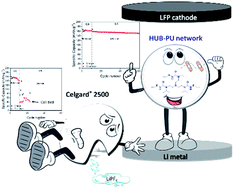
J. Mater. Chem. A, 2022,10, 12588-12596
https://doi.org/10.1039/D2TA02239G
Novel membranes with extremely high permeability fabricated by 3D printing and nickel coating for oil/water separation
3D printing and nickel coating greatly enhance the membrane permeability and selectivity for oil/water separation.

J. Mater. Chem. A, 2022,10, 12055-12061
https://doi.org/10.1039/D2TA01971J
Unraveling the role of solvent–precursor interaction in fabricating heteroatomic carbon cathode for high-energy-density Zn-ion storage
A solvent–precursor interaction-guided synthetic strategy is proposed to design heteroatomic carbon cathodes with customized microstructures towards efficient Zn-ion energy storage.
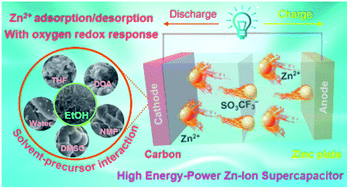
J. Mater. Chem. A, 2022,10, 9837-9847
https://doi.org/10.1039/D2TA00754A
Design of 3d transition metal anchored B5N3 catalysts for electrochemical CO2 reduction to methane
3d transition metal anchored B5N3 materials were analyzed as potential catalysts for electrochemical CO2 reduction to methane.
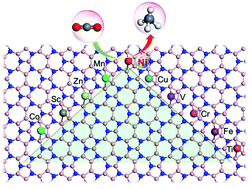
J. Mater. Chem. A, 2022,10, 9737-9745
https://doi.org/10.1039/D2TA00941B
An efficient screening strategy towards multifunctional catalysts for the simultaneous electroreduction of NO3−, NO2− and NO to NH3
An efficient strategy focusing on the key protonation process was confirmed to screen multifunctional electrocatalysts for the NORR, NO2RR and NO3RR.
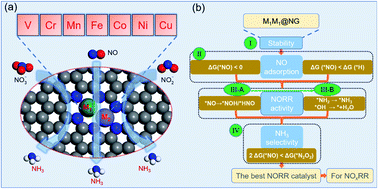
J. Mater. Chem. A, 2022,10, 9707-9716
https://doi.org/10.1039/D2TA00192F
Superior energy storage performance in (Bi0.5Na0.5)TiO3-based lead-free relaxor ferroelectrics for dielectric capacitor application via multiscale optimization design
A high-performance lead-free relaxor ferroelectric ceramic capacitor designed by a multiscale optimization strategy for energy storage applications.

J. Mater. Chem. A, 2022,10, 9535-9546
https://doi.org/10.1039/D2TA00380E
Chemical etching induced microporous nickel backbones decorated with metallic Fe@hydroxide nanocatalysts: an efficient and sustainable OER anode toward industrial alkaline water-splitting
An efficient and sustainable gas diffusible OER anode toward industrial alkaline water-splitting is fabricated by simply immersing Ni foam in ethanolic FeCl3 etchant, which produces a microporous Ni backbone decorated with nanocatalysts.

J. Mater. Chem. A, 2022,10, 8989-9000
https://doi.org/10.1039/D1TA10103J
An artificial light-harvesting system based on the ESIPT–AIE–FRET triple fluorescence mechanism
A Schiff-base derived TPE dimer has been designed and synthesized, which could be further prepared as NPs in water with tunable emission and sensing ability controlled by an integration of fluorescence mechanisms including ESIPT, AIE, and FRET.
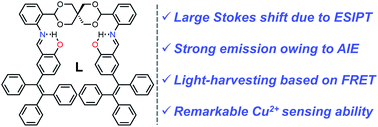
J. Mater. Chem. A, 2022,10, 8528-8534
https://doi.org/10.1039/D2TA00277A
Ultralight, highly compressible, thermally stable MXene/aramid nanofiber anisotropic aerogels for electromagnetic interference shielding
Due to the high conductivity of the anisotropic structure, the aerogel achieves excellent shielding properties. Meanwhile, the aerogel has high compressibility and excellent thermal stability, which greatly enriches the application scenarios of this shielding device.
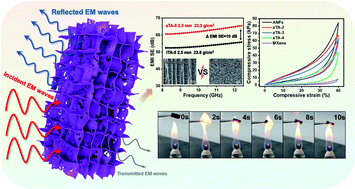
J. Mater. Chem. A, 2022,10, 6690-6700
https://doi.org/10.1039/D1TA11025J
Machine learning assisted high-throughput screening of transition metal single atom based superb hydrogen evolution electrocatalysts
Carbon-based transition metal (TM) single-atom catalysts (SACs) have shown great potential toward electrochemical water splitting and H2 production.
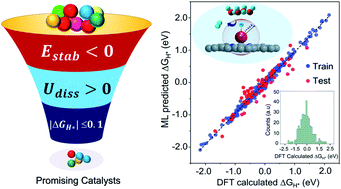
J. Mater. Chem. A, 2022,10, 6679-6689
https://doi.org/10.1039/D1TA09878K
Machine learning and molecular dynamics simulation-assisted evolutionary design and discovery pipeline to screen efficient small molecule acceptors for PTB7-Th-based organic solar cells with over 15% efficiency
A multi-stage machine learning and molecular dynamics simulation-assisted pipeline is introduced for the time- and cost-efficient design and screening of small molecule acceptors for organic solar cells.
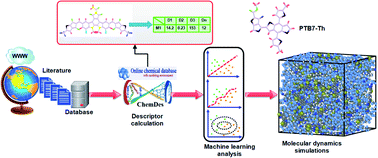
J. Mater. Chem. A, 2022,10, 4170-4180
https://doi.org/10.1039/D1TA09762H
Stabilization of ruthenium nanoparticles over NiV-LDH surface for enhanced electrochemical water splitting: an oxygen vacancy approach
Oxygen vacancy assisted stabilization of Ru@NiV-LDH was achieved via wet chemical methods. Ru@NiV-LDH showed an excellent water splitting activity. DFT analysis confirmed the stabilization Ru NPs over the LDH surface by 3.8 ± 0.5 eV adsorption energy.
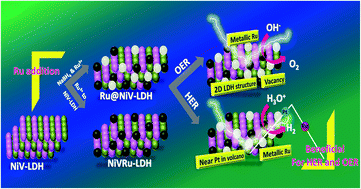
J. Mater. Chem. A, 2022,10, 3618-3632
https://doi.org/10.1039/D1TA09627C
Delicate crystallinity control enables high-efficiency P3HT organic photovoltaic cells
The time-dependent evolution of a P3HT:nonfullerene blend was revealed during annealing. The optimal blend gives 10.7%, which breaks the 10% benchmark for P3HT-solar cells.

J. Mater. Chem. A, 2022,10, 3418-3429
https://doi.org/10.1039/D1TA10161G
Highly exfoliated Ti3C2Tx MXene nanosheets atomically doped with Cu for efficient electrochemical CO2 reduction: an experimental and theoretical study
We present a facile method for the rational design of highly exfoliated two-dimensional Ti3C2Tx nanosheets (Tx = O, OH, and F) doped with Cu (Cu/Ti3C2Tx) for electrochemical CO2 reduction to formic acid at low Cu content of ∼1 wt%.
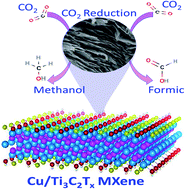
J. Mater. Chem. A, 2022,10, 1965-1975
https://doi.org/10.1039/D1TA09471H
Hollow MoC/NC sphere for electromagnetic wave attenuation: direct observation of interfacial polarization on nanoscale hetero-interfaces
In situ constructing hetero-interface, and revealing its interfacial polarization is challenging. Here, the Mo defect-induced interfacial polarization on MoC(−)/NC(+) interface was clarified, and for the first time, directly observed by hologram.
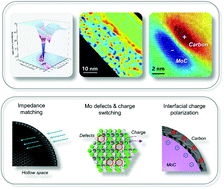
J. Mater. Chem. A, 2022,10, 1290-1298
https://doi.org/10.1039/D1TA09357F
About this collection
This web collection features the top 50 most cited, most downloaded or most shared articles and reviews published in Journal of Materials Chemistry A in 2022.
Congratulations to all of the authors whose publications have been featured!